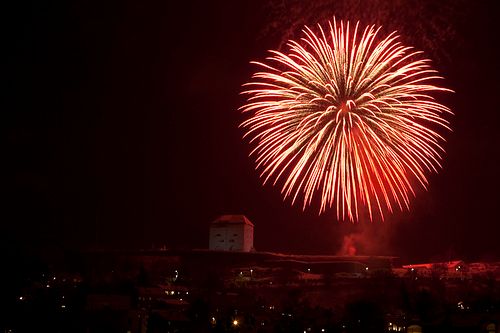
A Look at Different New Year Celebrations
As 2013 looms in the horizon, it's high time that we take a look at how other countries, cultures, and religions celebrate the New Year. While celebrating the New Year may mean resolutions, fireworks, and count downs for the most of us, other parts of the world have varying traditions that are just as interesting.
This article will discuss some of these traditions and will give insights on how other cultures welcome the coming year.
Buddhist New Year
Different Buddhist countries have varying ways of celebrating the New Year. For some, it is celebrated during the first three days after the first full moon of April. On the other hand, there are countries that celebrate around January's full moon. China, Vietnam, and Korea celebrate the New Year during the end of January or at the start of February. In Tibet, the New Year is called "Losar" and the celebration lasts for three days. On day 1, Tibetans spend the time celebrating with their families, while the second and third days are meant for celebrating with friends.
New Year in Scotland
In Scotland, the celebration of New Year's Eve is called "Hogmanay", a word derived from the name of an oat cake traditionally given to kids on New Year's Eve. Celebrations include a huge party in Edinburgh, where a ticketed event is held from Prince's Street to the Royal Mile and Edinburgh Castle. On January 1st, beginning midnight, the people of Scotland observe a tradition called "first footing" in which the first person to step into a residence during the New Year is said to affect the fortunes of the people living there. It is believed that strangers bring good luck.
Jewish New Year
Known as Rosh Hashanah, the date for Jewish New Year varies from year to year and occurs on the first two days beginning on 1 Tishrei. It celebrates the creation of the first man and woman, Adam and Eve, and their actions toward the realization of mankind's role in God's world. Traditions include the sounding of the shofar, as well as eating of foods including apples dipped on honey. Traditionally, Jewish people greet each other "Shanah Tovah" which translates into "[Have] a good year."
New Year in Japan
The Japanese New Year is called "Oshogatsu" and it is celebrated on the first of January. On this day, the Japanese begin to laugh, as doing so is believed to bring in good luck for the coming year. A rope of straw is also hung across the front of houses to ward out evil spirits and to bring in happiness and good fortune. One January 2nd, members of the family take turns dipping a Burch into ink and scribing a poem or proverb into a strip of paper.
Resources
To learn more about various New Year celebrations and for further information about the above-mentioned traditions, check out the following links and resources:
San Francisco Buddhist Center - The official website of the San Francisco Buddhist Center
Offerings to Kings and Buddha: Vietnamese Ritual Activities at Chua Bo De - An informative article about a Vietnamese New Year's celebration in a Buddhist temple.
Education Scotland - A resource page about Rosh Hashanah by Education Scotland
Chabad - A website rich with information on Jewish traditions and values.
Japan Guide - A info page about Oshogatsu by Japan-Guide.com
Morikami - The official site of the Morikami Museum and Japanese Gardens
Image credit: Tormel on Flickr
http://www.flickr.com/photos/tormel/4232625674/sizes/m/in/photostream/Categories
- Arts & Entertainment 100
- Automotive 186
- Business & Professional Services 219
- Construction & Contractors 298
- Clothing & Accessories 76
- Community & Government 95
- Computers & Electronics 74
- Education 75
- Food & Dining 86
- Health & Medicine 186
- Legal & Financial 100
- Home & Garden 179
- Industry & Agriculture 105
- Media & Communications 44
- Personal Care & Services 73
- Real Estate 68
- Shopping 74
- Sports & Recreation 87
- Travel & Transportation 102
- Animals & Pets 11
- Arts 9
- Community 9
- Chain 607
- Computers & Internet 8
- Health Care 10
- Communication & Media 7
- Shopping & Retail 10
- Health & Beauty 9
- Education & Schools 8
- Financial & Legal Services 14
- Home & Office 13
- Lawyers & Legal Services 7
- Financial & Services 1
